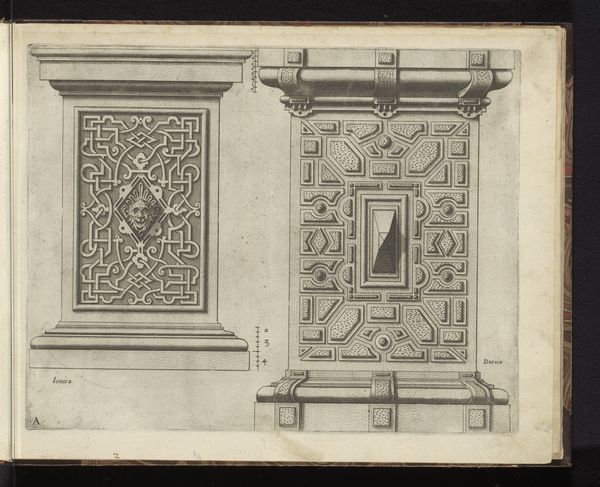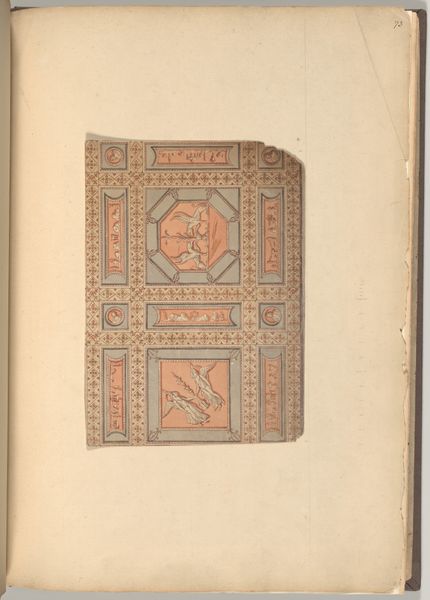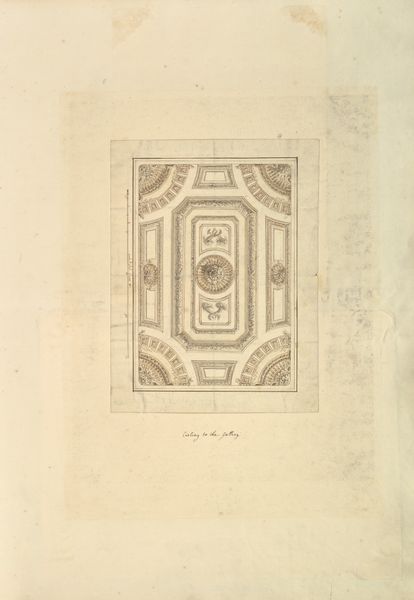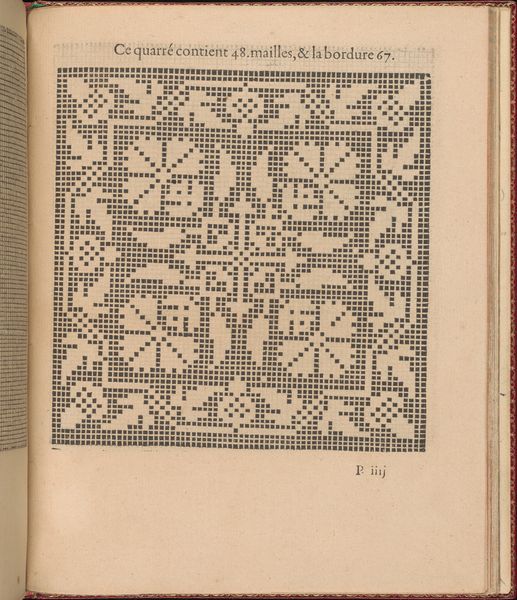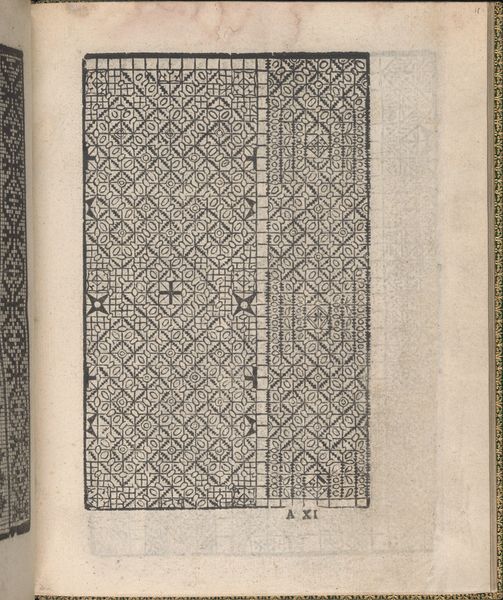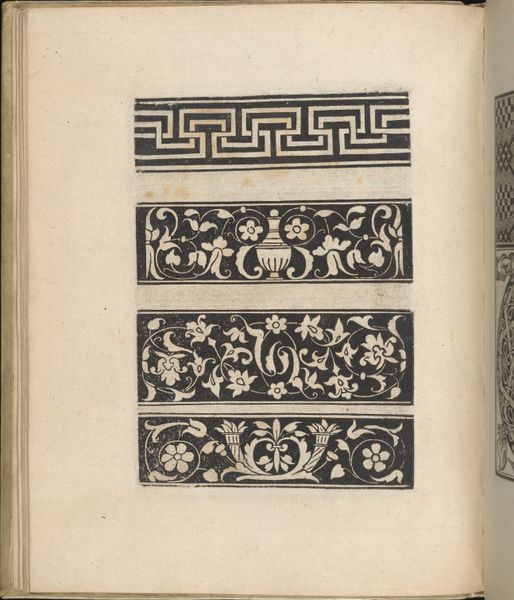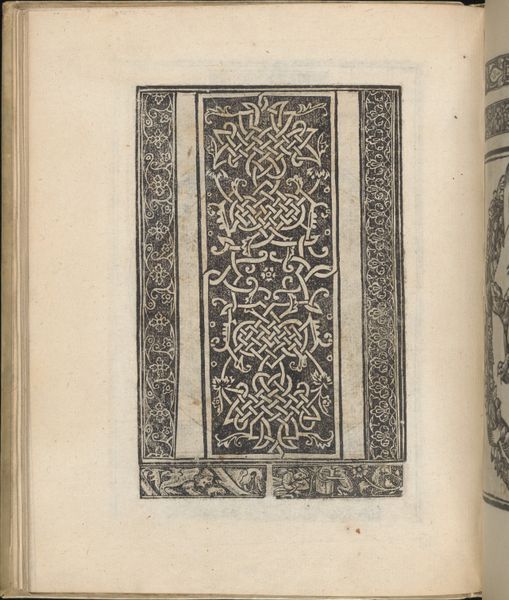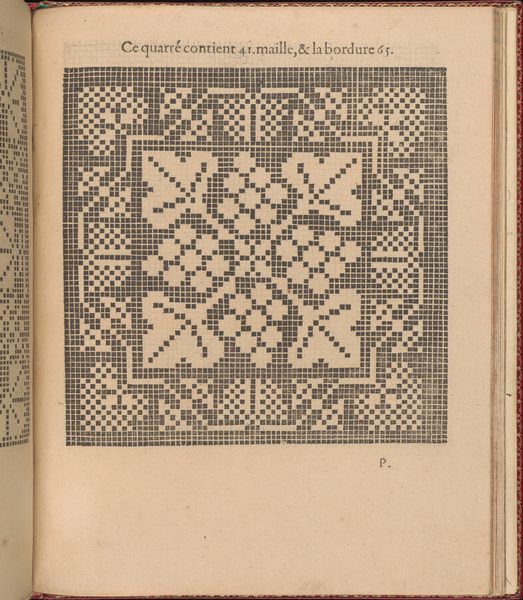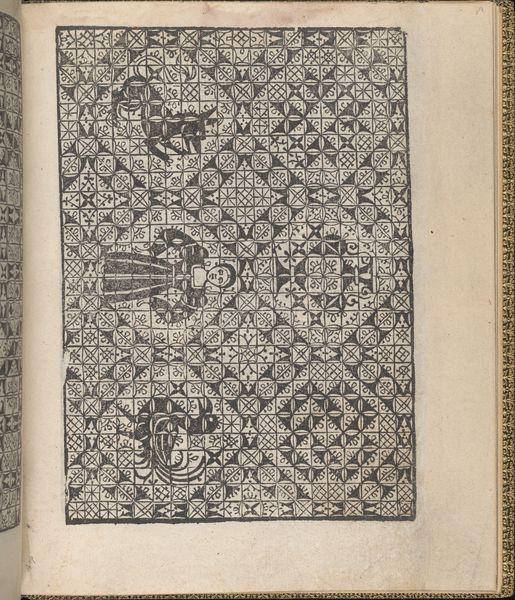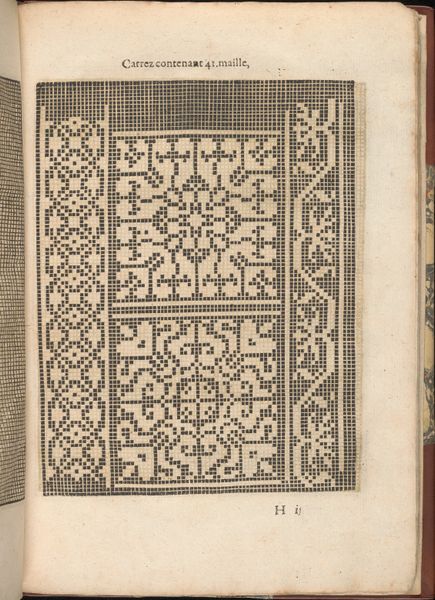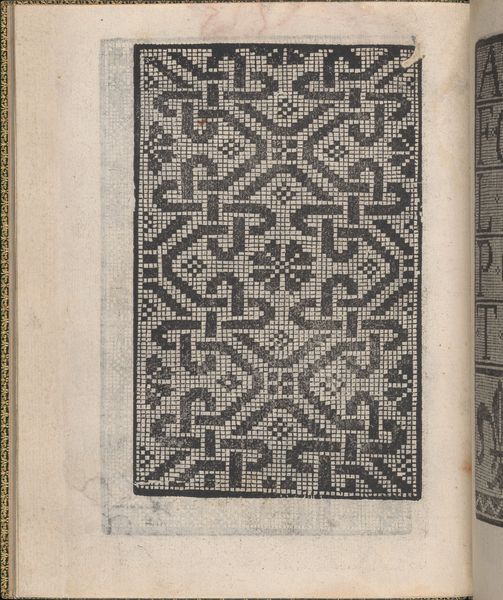
drawing, paper, engraving, architecture
#
drawing
#
neoclacissism
#
paper
#
geometric
#
decorative-art
#
engraving
#
architecture
Dimensions: height mm, width mm, height 580 mm, width 410 mm
Copyright: Rijks Museum: Open Domain
Editor: We're looking at Giacomo Mercoli's "Plafond," an engraving on paper from 1787. It's a meticulously detailed rendering of a ceiling, dominated by geometric shapes and classical motifs. The intricacy is almost overwhelming. What's your interpretation of this decorative design? Curator: The precision reflects Neoclassicism's engagement with ideas of rationalism and order. Think about the social context in which this drawing was made. It emerges from a period grappling with shifting power structures, right before the French Revolution. The symmetry and idealized forms evoke stability during political and social upheaval, harking back to a perhaps idealized view of the Roman Republic. Do you see echoes of power dynamics in the ornament itself? Editor: Power dynamics? It's interesting you say that. It's just a ceiling design. How does it connect to power? Curator: Well, consider where such a ceiling might be found. Whose gaze is meant to travel across these carefully arranged forms? The leisure to contemplate this is afforded to very few. This ornamental language would be immediately readable by those with classical educations: those who occupied positions of authority. The geometric rigidity, what seems timeless, thus embodies existing social hierarchies, all meticulously rendered within a system of representation legitimized through access and privilege. Editor: That's a completely different way of seeing it than I had! I was caught up in just how pretty it is. Curator: Its beauty is a feature, not a bug, within systems of power. Beauty performs its own work. But to focus solely on aesthetics is to miss a rich opportunity for interpretation. What would change if the ornamental program featured vernacular or subversive designs instead? How might space be transformed into a field for political assertion? Editor: It reframes my entire perspective of the piece to think of it in those terms. Thank you for sharing your thoughts. Curator: It was my pleasure. Art becomes a far more interesting project when we view it with new analytical tools.
Comments
No comments
Be the first to comment and join the conversation on the ultimate creative platform.
